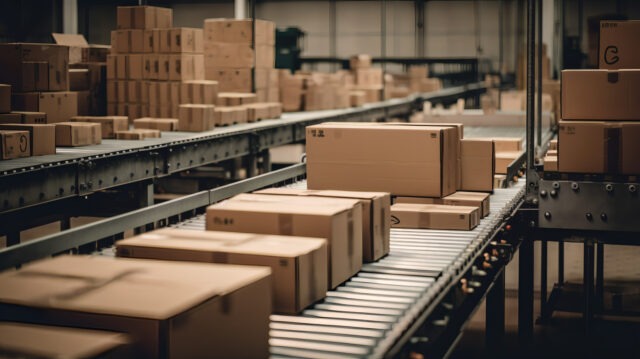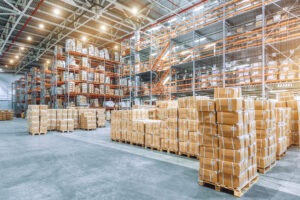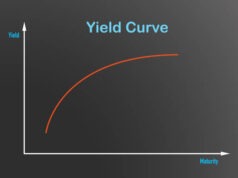
Industrial packaging often takes a backseat to product development and marketing strategies in business operations. However, it’s a pivotal aspect of the supply chain that can heavily influence a company’s financial performance.
Leading organizations in the industrial packaging sector, such as Palmetto Industries, have set a benchmark with their high-quality, cost-effective solutions, enlightening businesses about the value of packaging in their operations.
Read on to comprehend the financial implications of industrial packaging on your business.
Understanding The Direct Costs
Knowing the direct costs of packaging is the first step to understanding its financial implications on your business operations. Key cost components include:
- Packaging Materials: The raw materials used for packaging significantly influence costs. Balancing cost and quality is crucial to avoid future complications.
- Labor Costs: The complexity of the packaging process can determine labor costs. Efficient training and automation can help reduce these costs without compromising packaging quality.
- Energy Consumption: Energy-efficient practices and machinery are essential in managing energy costs related to packaging.
- Packaging Machinery: Investing in cutting-edge, efficient machinery could result in substantial long-term savings. High-speed machines bolster productivity, decreasing costs per package.
- Maintenance and Repair: Regular maintenance can prevent expensive repairs and disruptive production halts, contributing to effective cost management.
Strategically managing these direct costs can significantly enhance your business’s profit margin. Regular audits and continuous cost optimization are essential to balance cost savings with packaging quality.
The Impact On Logistics

Industrial packaging decisions impact the logistics process, influencing everything from freight costs to delivery times. A well-planned packaging strategy can result in substantial savings and efficiency. Consider the following points:
- Freight Costs: The size and weight of your packaging determine the freight costs. Opting for lightweight, compact packaging can substantially cut these costs. An innovative design can help you package more products in less space, lowering freight bills.
- Damage Control: Packaging plays a crucial role in protecting your product during transit. High-quality, durable packaging reduces the risk of product damage, resulting in fewer returns and re-shipments. Thus, investing in sturdy packaging can save you a considerable amount in the long run.
- Handling Efficiency: Well-designed packaging can improve handling efficiency during loading and unloading. Packages that are easier to handle reduce labor time, which, in turn, speeds up the logistics process and reduces costs.
- Delivery Times: Efficient packaging can also impact delivery times. With compact, easy-to-handle packages, more products can fit into a single vehicle. This efficiency can lessen the number of trips needed, saving time and fuel, and leading to quicker deliveries.
- Regulatory Compliance: It’s also important to note that certain products require specific packaging to meet regulatory requirements. Non-compliance can lead to hefty fines or shipment rejections, which can negatively impact your bottom line
The relationship between industrial packaging and logistics is complex. Strategic decisions about packaging can reduce logistics costs, improve delivery times, and ensure regulatory compliance, thus enhancing your overall business profitability.
Inventory Management And Storage
Inventory management and storage are vital aspects of a business operation where packaging can have a significant impact. Here’s how:
- Storage Efficiency: Efficiently designed packaging can make the most out of your warehouse space. The size, shape, and stackability of your packaging significantly influence storage capacity. By minimizing the space each package occupies, you can store more products in the same area, leading to cost savings.
- Inventory Control: Packaging can also play a role in effective inventory management. Clear labeling and barcoding can streamline your inventory tracking, making it easier to manage stock levels. This can prevent overstocking or understocking, ensuring that your business runs smoothly.
- Safety and Maintenance: Appropriate packaging protects your inventory from damage during storage, reducing the likelihood of product loss. This saves replacement costs and prevents supply chain disruptions that could affect customer satisfaction.
- Labor Efficiency: Efficient packaging design can also improve labor efficiency in your warehouse. Easier-to-handle packages reduce the time and effort required for moving and stacking products, thereby saving labor costs.
All these points underline the essential role packaging plays in inventory management and storage.
Customer Perception And Brand Image
Beyond the operational implications, industrial packaging can significantly influence how customers perceive your brand and product. Here’s how:
- First Impressions: Packaging is often the first physical interaction a customer has with your brand. If the packaging is high-quality, easy to open, and well-designed, it can create a positive first impression, which can enhance customer satisfaction and loyalty.
- Brand Recognition: Customized packaging that aligns with your brand image can make your products easily recognizable. This boosts brand awareness and can give you a competitive edge in the market.
- Product Protection: If a product arrives damaged due to poor packaging, it not only results in returns and replacements but also negatively impacts customer trust. High-quality packaging signifies that you value their purchase and the integrity of your product.
At its core, industrial packaging is more than just enclosing your product for shipment. It’s a vital touchpoint in the customer journey, shaping your brand image and customer perception.
Sustainability And Environmental Compliance
Industrial packaging’s role in sustainability and environmental compliance is becoming increasingly vital in today’s business landscape. Here’s how:
- Reducing Carbon Footprint: Lightweight, compact packaging uses fewer materials, reducing your business’s carbon footprint. It also means less waste in landfills, making your operations more sustainable.
- Recyclability: Packaging materials that are recyclable or made from recycled content can significantly reduce environmental impact. Consumers are also more likely to choose products with sustainable packaging, enhancing your brand’s appeal.
- Regulatory Compliance: Regulations regarding packaging waste and recycling are getting stricter. Complying with these regulations can prevent costly penalties and demonstrate your commitment to sustainability.
- Eco-friendly Design: Packaging designed to minimize waste and maximize reuse can reduce environmental impact. It also saves resources in the long run, contributing to cost savings and a better brand image.
- Supply Chain Impact: Sustainable packaging choices can also influence your supply chain partners to adopt greener practices, creating a ripple effect of sustainability.
By incorporating sustainability into your packaging strategy, you’re not just doing good for the planet, you’re also creating tangible benefits for your business.
Conclusion
Understanding the financial impact of industrial packaging is crucial for businesses. The interplay of cost, logistics, inventory management, customer perception, and sustainability molds the financial outcomes. By understanding and leveraging these factors, businesses can transition packaging from a cost center to a value generator. Ultimately, an insightful approach to packaging can significantly impact a company’s bottom line.


































